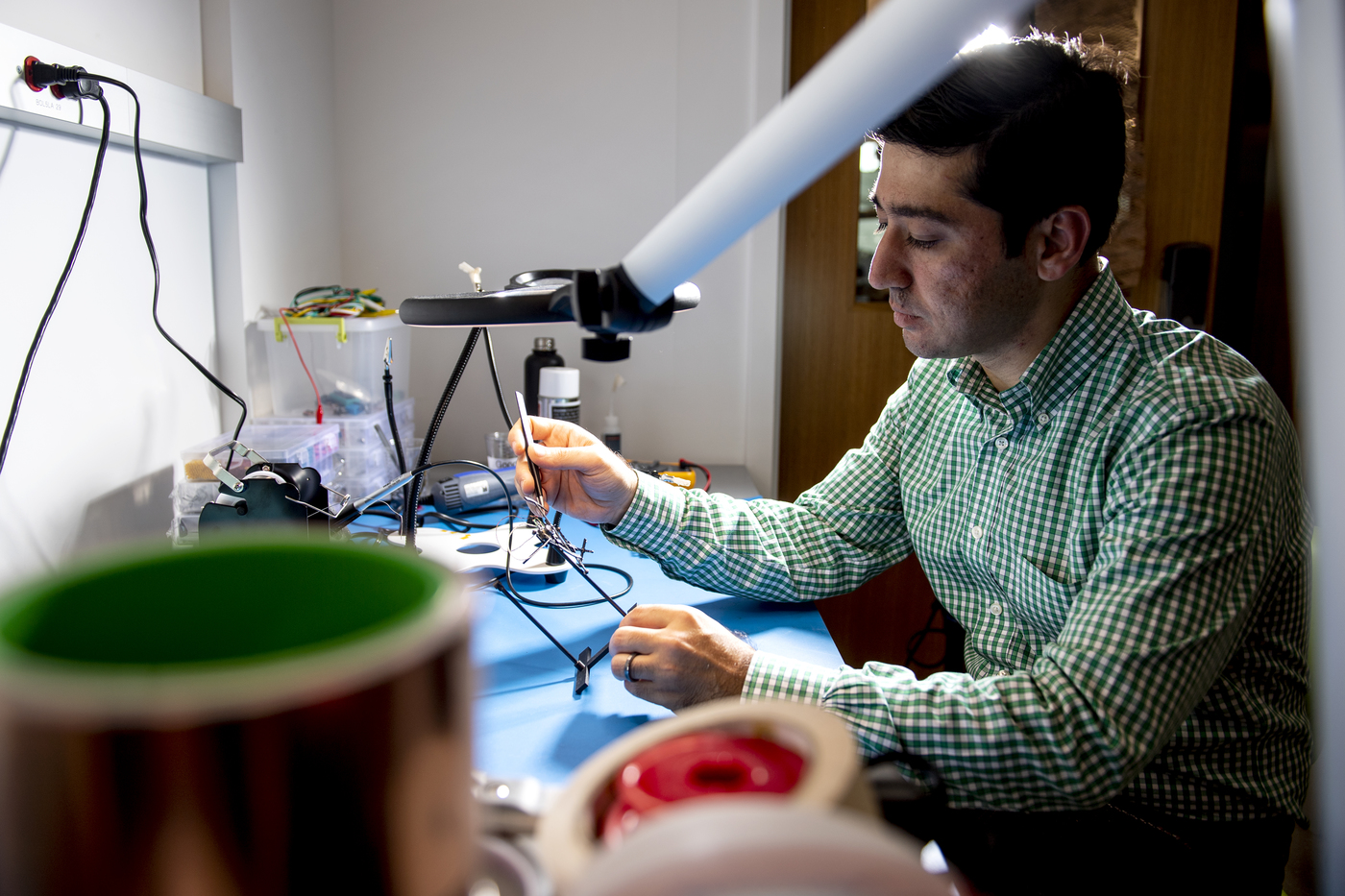A robot that crawls and flies like an animal could soon explore space and deliver packages

It’s a bird, it’s a bat, it’s a robot!
A new advancement in robotics, the multi-modal mobility morphobot, or M4, could bring innovative solutions to everything from space exploration to package delivery, with a little help from the animal kingdom.
Designed by a team of researchers led by Alireza Ramezani, assistant professor of electrical and computer engineering at Northeastern University, M4 is a shapeshifter. It has eight modes of mobility––from crawling to flying––and, taking inspiration from birds, bats and even meerkats, it can change seamlessly between them.
In one moment, M4 could be a four-wheeled vehicle driving like any number of other wheeled robots. The next moment, it could be using those wheels to crawl, wheel by wheel, like a lizard. And the next moment, it could rotate all four wheels, which also house propellers, to become a quadcopter capable of flight. It can even sit on two wheels, similar to a meerkat on its hind legs, and use two thrusters to propel itself forward.
“To the best of my knowledge––I’ve been in this field 15 years––I cannot think of any robot with this level of locomotion plasticity and number of modes that we have showcased,” Ramezani says.

That’s not the only novelty M4 brings to the table. Based on its surroundings and the obstacles it detects in the environment, M4 can switch between its various modes of mobility autonomously. Ramezani says this is a first in the world of robotics, where autonomous movement has long been the norm in robots with one method of moving.
In 2020, Ramezani started to conceive of a machine that could change its shape and use thrust vectoring, the process of manipulating thrust force generated by devices like propellers. He saw “no end to the applications of a machine like this.”
When it came time to design their robot, Ramezani and Morteza Gharib, a fluid dynamics expert at Caltech who collaborated on this project, found inspiration in the natural world. Ramezani is well-known for his bio-inspired designs, particularly his work with bats that formed the foundation for M4’s shapeshifting design.
“If you look at bats, they morph their body, and in morphing their body, they do thrust vectoring,” Ramezani says. “Through morphing its shape and thrust vectoring it augments its capabilities.”
He also drew on the movement of birds, which Ramezani says “are famous for their extensive modes of mobility.” The team looked specifically at the chukar, a kind of partridge that uses both its legs and the thrust generated by its wings to go over steep slopes. M4 has its own “robotic bio-mimicry” of this wing-assisted incline running where it can stand on two wheels and use the thrust generated by its other two propellers to move up inclines and slopes.
Ramezani imagines this kind of flexible mobility would be invaluable in search and rescue operations or in space applications like Mars exploration. Massive craters with steep slopes pose a regular problem for NASA’s wheeled or tracked Mars rovers.
“What if we combined aerial mobility with ground mobility to fly over these steep slopes, get to the lowland region, transform into a wheeled vehicle and continue the mission?” Ramezani says.
Another potential use for M4 that’s a little closer to home: delivering packages.
“Aerial systems cannot operate in buildings because they are not safe, but at the same time they are three times faster than ground systems,” Ramezani says. “A machine like this could fly to a rooftop … and then could use its safe, precision ground mobility to go inside the building and deliver a package inside the building.”
Whether it’s deployed on the surface of Mars or the streets––and skies––of cities on Earth, Ramezani is hopeful that M4 will be part of the next wave of robotic advancements that change the way we live our lives for the better.
“We had Marc Raibert, the founder of Boston Dynamics, at Northeastern a couple times visiting our lab, and seeing some of the multi-modal robots we’re creating, and in his words, these are going to be future, game changing technologies,” Ramezani says. “Hopefully, we can bring these things to real-world applications and make an impact at a societal level.”
Cody Mello-Klein is a Northeastern Global News reporter. Email him at c.mello-klein@northeastern.edu. Follow him on Twitter @Proelectioneer.






